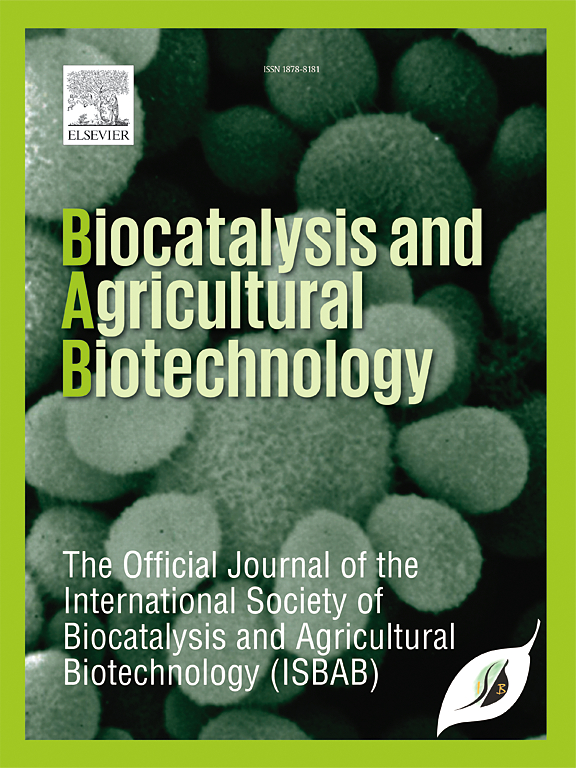Molecular mechanisms underlying the decolorization of indigo carmine and coomassie blue R-250 by Streptomyces salinarius CS29 laccase
IF 3.4
Q2 BIOTECHNOLOGY & APPLIED MICROBIOLOGY
引用次数: 0
Abstract
Laccase, a multicopper oxidase enzyme, possesses broad substrate specificity, enabling the oxidation of a diverse array of compounds. Among various microbial sources, Streptomyces species are prominent for producing stable and highly efficient laccases. This study investigated the decolorization potential of crude laccase extracted from Streptomyces salinarius CS29, specifically targeting indigo carmine and Coomassie Blue R-250 (CBBR). Optimal decolorization of both dyes was achieved within a pH range of 3–3.5, with pH 3.5 selected for subsequent experiments. Indigo carmine, at a concentration of 100 μM, demonstrated superior decolorization efficiency, reaching approximately 90% within 100 min. In contrast, decolorization of CBBR was less efficient. At concentrations of 50, 100, and 250 μM, approximately 50% decolorization was observed after 180 min. These findings suggest that laccase from S. salinarius CS29 exhibits greater efficacy in decolorizing indigo carmine compared to CBBR. Additionally, molecular docking and molecular dynamics (MD) simulations were employed to investigate the structural dynamics of the enzyme-dye complexes. MD simulations revealed that both indigo carmine and CBBR bind within the active site of the enzyme, predominantly through van der Waals interactions. Furthermore, key binding residues crucial for these interactions were identified. The findings of this study offer a foundational understanding that could significantly contribute to the development of environmentally sustainable strategies for the detoxification of dye-contaminated wastewater.

求助全文
约1分钟内获得全文
求助全文
来源期刊

Biocatalysis and agricultural biotechnology
Agricultural and Biological Sciences-Agronomy and Crop Science
CiteScore
7.70
自引率
2.50%
发文量
308
审稿时长
48 days
期刊介绍:
Biocatalysis and Agricultural Biotechnology is the official journal of the International Society of Biocatalysis and Agricultural Biotechnology (ISBAB). The journal publishes high quality articles especially in the science and technology of biocatalysis, bioprocesses, agricultural biotechnology, biomedical biotechnology, and, if appropriate, from other related areas of biotechnology. The journal will publish peer-reviewed basic and applied research papers, authoritative reviews, and feature articles. The scope of the journal encompasses the research, industrial, and commercial aspects of biotechnology, including the areas of: biocatalysis; bioprocesses; food and agriculture; genetic engineering; molecular biology; healthcare and pharmaceuticals; biofuels; genomics; nanotechnology; environment and biodiversity; and bioremediation.
 求助内容:
求助内容: 应助结果提醒方式:
应助结果提醒方式:


